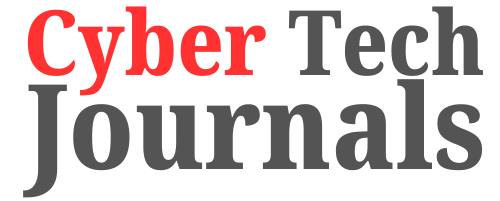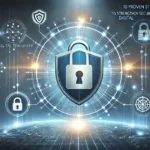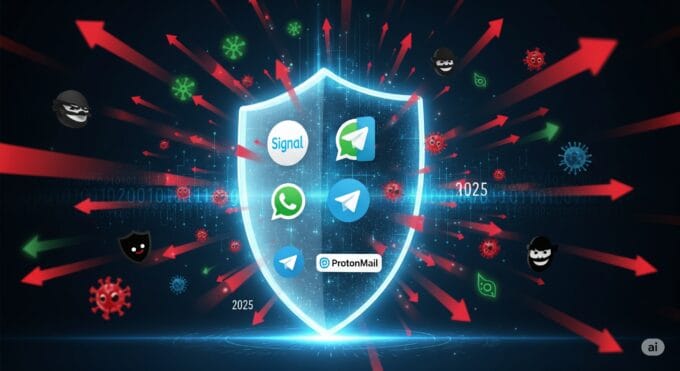The digital landscape is a battlefield, constantly shifting with new threats and vulnerabilities. As businesses race towards innovation, the shadows of cyber risk loom larger than ever. For technical experts and CISOs, 2025 isn’t just another year; it’s a critical juncture where proactive cyber risk management strategies will determine the survival and success of organizations. Are you ready to navigate this complex terrain and secure your business from the invisible adversaries?
This article will delve into the evolving threats of 2025 and outline the essential strategies for robust cyber risk management, drawing on insights from leading IT firms and real-world challenges.

Key Takeaways
- Evolving Threat Landscape: Expect more sophisticated, AI-driven attacks, persistent ransomware, and supply chain vulnerabilities in 2025, demanding adaptive defense strategies.
- Foundational Pillars: Effective cyber risk management hinges on continuous risk identification, robust mitigation (including Zero Trust and advanced threat detection), swift incident response, and ongoing monitoring.
- Strategic Imperatives: Prioritize AI in defense, fortify supply chains, cultivate a strong security culture, ensure regulatory compliance, and strategically budget for cyber resilience.
- Proactive & Adaptive: Move beyond reactive security to a proactive, predictive model that anticipates threats and continuously improves defenses.
- Human & Tech Synergy: Recognize that technology alone isn’t enough; integrating human intelligence, training, and a strong security culture is paramount.
The Evolving Threat Landscape in 2025: What’s on the Horizon?
The cybersecurity world is dynamic, with attackers continually refining their techniques. In 2025, several trends will significantly shape the threat landscape, demanding a more agile approach to cyber risk management.
According to reports from firms like IBM Security, the average cost of a data breach continues to rise, reaching an all-time high in recent years. This highlights the financial stakes involved in inadequate security.
Sophisticated AI-Driven Attacks
Artificial intelligence (AI) is a double-edged sword. While it offers powerful tools for defense, adversaries are increasingly leveraging AI and machine learning to launch more sophisticated and evasive attacks. This includes:
- Adaptive Malware: AI-powered malware that can learn from its environment and adjust its behavior to evade detection.
- Automated Phishing: AI-generated phishing emails that are highly personalized and convincing, making them harder for employees to spot.
- Deepfakes & Voice Clones: Used in social engineering to impersonate executives or trusted individuals, leading to significant financial fraud or data breaches.
“The true test of cyber resilience in 2025 will be an organization’s ability to not just react to, but anticipate and defend against, AI-powered threats.”
Persistent Ransomware & Extortion Tactics
Ransomware remains a top concern. Threat actors are moving beyond just encrypting data; they are increasingly engaging in “double extortion” (encrypting data and exfiltrating it for public release) and “triple extortion” (adding DDoS attacks or direct harassment of victims’ customers). The shift towards Ransomware-as-a-Service (RaaS) models makes these attacks accessible to a wider range of malicious actors, making it even more crucial to understand how to remove ransomware and prevent it.
Supply Chain Vulnerabilities
The SolarWinds attack was a stark reminder of the devastating impact of supply chain compromises. In 2025, attackers will continue to target less secure links in the supply chain – third-party vendors, software components, and open-source libraries – to gain access to larger organizations. This necessitates a robust vendor risk management program.
Quantum Threats
While still nascent, the looming threat of quantum computing breaking current encryption standards is something CISOs must begin to consider. Post-quantum cryptography is a field of active research, and understanding why quantum cybersecurity is the new battleground is becoming critical for long-term strategies.
Increased Focus on Data Privacy
With stricter regulations like GDPR, CCPA, and emerging privacy laws globally, the stakes for data breaches are higher than ever. Organizations face not only reputational damage but also hefty fines for non-compliance. Understanding the nuances of encrypted apps amid cyberattack 2025 and how to encrypt sensitive files will be vital.
It’s also essential to have a deep understanding of understanding cybercrime: the invisible threat to build comprehensive defense strategies.
Foundational Pillars of Cyber Risk Management
Effective cyber risk management is not a one-time project but a continuous cycle built on several core pillars.
1. Risk Identification & Assessment
Before you can protect your assets, you must know what they are, where they are, and what risks they face.
- Asset Inventory: A comprehensive list of all IT assets (hardware, software, data, cloud services, IoT devices) and their criticality to business operations.
- Threat Intelligence: Staying updated on the latest threats, attack vectors, and attacker methodologies. This includes leveraging external threat intelligence feeds and internal security analytics.
- Vulnerability Management: Regularly scanning for, identifying, and patching vulnerabilities in systems and applications.
- Risk Analysis: Assessing the likelihood of a threat exploiting a vulnerability and the potential impact. This can be qualitative (high, medium, low) or quantitative (assigning monetary values to potential losses).
2. Risk Mitigation & Controls
Once risks are identified, the next step is to implement controls to reduce them to an acceptable level.
- Zero Trust Architecture (ZTA): A fundamental shift from perimeter-based security, Zero Trust assumes no user or device can be trusted by default, regardless of whether they are inside or outside the network. Every access request is authenticated and authorized. Learn more about implementing a zero-trust architecture.
- Advanced Threat Detection & Response (ATDR): Moving beyond traditional antivirus, ATDR leverages AI, behavioral analytics, and machine learning to detect subtle indicators of compromise (IoCs) and respond rapidly. This includes Endpoint Detection and Response (EDR), Network Detection and Response (NDR), and Security Information and Event Management (SIEM) systems. Explore opensource threat detection tools to bolster your capabilities.
- Data Encryption: Encrypting data at rest and in transit is crucial, especially for sensitive information. This limits the damage if a breach occurs, making stolen data unreadable.
- Secure Software Development Lifecycle (SSDLC): Integrating security practices from the very beginning of the software development process, including secure coding, regular security testing, and vulnerability scanning.
- Employee Training & Awareness: The human element remains the weakest link. Regular, engaging training on phishing, social engineering, strong password practices, and data handling is non-negotiable.
3. Incident Response & Recovery
Despite the best prevention efforts, breaches can happen. A robust incident response plan is vital to minimize damage and ensure business continuity.
- Preparation: Developing a detailed disaster recovery plan that outlines roles, responsibilities, communication protocols, and technical steps. This includes regular tabletop exercises and simulations.
- Detection & Analysis: Quickly identifying security incidents and understanding their scope, cause, and impact.
- Containment, Eradication & Recovery: Steps to stop the attack, remove the threat, restore affected systems, and recover data from backups.
- Post-Incident Review: Learning from each incident to improve security posture and prevent future occurrences.
| Phase | Description | Example Activities |
|---|---|---|
| Preparation | Establishing policies, procedures, and tools before an incident occurs. | Develop IR plan, train staff, acquire tools, establish communication channels. |
| Identification | Detecting and confirming a security incident. | Monitor alerts, analyze logs, verify suspicious activity. |
| Containment | Limiting the scope and impact of the incident. | Isolate infected systems, block malicious IPs, disable compromised accounts. |
| Eradication | Removing the root cause of the incident. | Patch vulnerabilities, remove malware, reset passwords. |
| Recovery | Restoring affected systems and services to normal operation. | Restore from backups, test systems, monitor for recurrence. |
| Post-Incident Activity | Analyzing the incident to improve future response and prevention. | Lessons learned, update policies, enhance security controls. |
4. Continuous Monitoring & Improvement
Cyber risk management is not static. The threat landscape, technologies, and business needs are constantly evolving.
- Security Operations Center (SOC): A centralized unit dedicated to monitoring, detecting, analyzing, and responding to cybersecurity threats.
- Regular Audits & Penetration Testing: Independent assessments to identify weaknesses and validate the effectiveness of security controls.
- Performance Metrics: Tracking key performance indicators (KPIs) and key risk indicators (KRIs) to measure the effectiveness of security programs and identify areas for improvement.
- Threat Intelligence Integration: Continuously updating defense mechanisms based on the latest threat intelligence.
Strategic Imperatives for 2025
Beyond the foundational pillars, certain strategic imperatives will define successful cyber risk management in 2025.
1. Embracing AI for Defense
As attackers wield AI, defenders must do the same. AI and machine learning can dramatically enhance threat detection, automate routine security tasks, and predict potential attacks. CISOs need to consider how AI impacts the CISO role in 2025 and explore AI-powered solutions for:
- Behavioral Analytics: Identifying anomalous user or system behavior that might indicate a breach.
- Vulnerability Prioritization: Using AI to determine which vulnerabilities pose the greatest risk based on context and threat intelligence.
- Automated Incident Response: AI-driven playbooks that can automatically contain threats or trigger alerts.
2. Deepening Supply Chain Security
The interconnectedness of modern businesses means a vulnerability in a single vendor can expose many.
- Vendor Risk Assessments: Thoroughly vetting third-party vendors for their security posture, including their own cyber risk management practices.
- Contractual Clauses: Including strong security requirements and audit rights in contracts with vendors.
- Continuous Monitoring: Not just a one-time assessment, but ongoing monitoring of vendor security performance.
3. Cultivating a Strong Security Culture
Technology alone cannot secure an organization. Employees are often the first line of defense, but also the most common point of entry for attackers.
- Regular, Engaging Training: Moving beyond annual, boring security training to continuous, interactive, and relevant education.
- Phishing Simulations: Regularly testing employee susceptibility to phishing attacks and providing immediate feedback.
- Security Champions: Empowering employees across departments to act as security advocates.
4. Navigating Regulatory Compliance & Governance
The regulatory landscape is becoming increasingly complex. Non-compliance can lead to significant financial penalties and reputational damage.
- Data Mapping: Understanding where sensitive data resides and how it flows through the organization.
- Compliance Frameworks: Adhering to relevant frameworks (e.g., NIST, ISO 27001, SOC 2) and industry-specific regulations.
- Collaboration with Legal & Privacy Teams: Ensuring that security practices align with legal and privacy requirements.
- Understanding CERTs and their global role can also provide valuable insights into international cooperation and standards in cybersecurity.
5. Strategic Budgeting for Cyber Resilience
Cybersecurity is an investment, not just an expense. CISOs must effectively articulate the ROI of security initiatives to secure adequate funding.
- Risk-Based Budgeting: Allocating resources based on the most critical risks and potential impacts.
- Measuring Effectiveness: Demonstrating the value of security investments through metrics like reduced incident costs, improved compliance, and enhanced business continuity.
- Investing in Resilience: Prioritizing investments that build the organization’s ability to withstand and recover from attacks, rather than just preventing them.
Assess Your Cyber Risk Management Maturity
How well is your organization prepared for the cyber threats of 2025? Use this simple interactive tool to get an idea of your current cyber risk management posture.
Conclusion: Building a Resilient Future
Cyber risk management in 2025 is not merely about preventing breaches; it’s about building a resilient organization that can withstand, detect, and rapidly recover from inevitable cyber incidents. For technical experts and CISOs, this means adopting a holistic, proactive, and adaptive approach.
By prioritizing continuous risk assessment, implementing robust security controls like Zero Trust, strengthening incident response capabilities, and fostering a strong security culture, businesses can transform cyber threats into manageable risks. The future of business depends on a strong cybersecurity posture. Are you ready to lead the charge?














Leave a comment